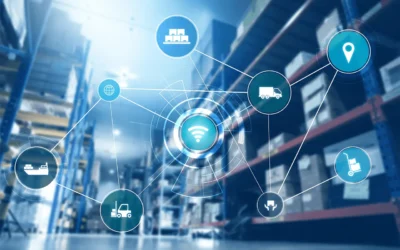The Green Revolution: A Glimpse into the Future of Sustainable Commercial Buildings

The significance of environmental sustainability is rapidly increasing, causing the commercial building industry to undergo a transformative shift toward greener solutions and practices.
The future of sustainable buildings promises significant cost savings and enhanced occupant well-being. Keep reading to explore the latest green solutions and trends that are shaping the future of commercial buildings.
Energy Efficiency: The Key to Sustainability
Energy efficiency is at the forefront of sustainable building design, as implementing energy-efficient technologies reduces carbon footprints and helps conserve valuable resources.
Some popular green solutions include LED lighting, smart sensors for lighting and HVAC control, and energy-efficient windows that minimize heat loss. They reduce operating costs and create a healthier and more comfortable working environment for employees.
Renewable Energy Integration
Renewable energy sources power the destiny of endurable commercial buildings. Solar panels, wind turbines, and geothermal systems are becoming increasingly common in these construction designs.
By generating clean electricity on-site, businesses can reduce their reliance on fossil fuels, cut utility bills, and contribute to a greener grid.
Eco-Friendly Building Materials
In sustainable building practices, the selection of building materials plays an important role. Developers and architects increasingly opt for eco-friendly materials with minimal environmental impact. Materials like recycled steel, reclaimed wood, and low-VOC (volatile organic compounds) paint promote healthier indoor air quality and reduce waste.
Green Roofing and Living Walls
Green roofs and living walls are gaining popularity as innovative ways to enhance sustainability in commercial facilities. Green roofs—covered with vegetation—improve thermal insulation, reduce stormwater runoff, and mitigate the urban heat island effect. Living walls adorned with living plants improve indoor air quality while adding a touch of natural beauty to the workplace.
Water Conservation and Management
Advanced plumbing fixtures, such as low-flow toilets and sensor-activated faucets, significantly reduce water usage. Additionally, rainwater harvesting systems collect and store rainwater for non-potable uses like irrigation and flushing, reducing water consumption.
Smart Building Technologies
The future of sustainable commercial buildings lies in the integration of smart technologies. Building automation systems allow for real-time monitoring and the control of energy use in heating, ventilation, air conditioning (HVAC), and lighting.
Artificial intelligence and machine learning algorithms further optimize building performance by analyzing data patterns and proactively adjusting energy efficiency.
WELL Building Standard: Putting People First
In addition to environmental sustainability, the well-being of building occupants is a priority in the future of eco-friendly commercial structures. The WELL Building Standard emphasizes features promoting occupant health and productivity, such as improved indoor air quality, access to natural light, biophilic design, and spaces encouraging physical activity and mental well-being.
As businesses embrace sustainable practices, they contribute to a healthier planet and create more attractive and efficient spaces that benefit their bottom line and the well-being of their occupants. With the right approach and commitment to sustainability, the future is promising for a greener and more sustainable commercial building industry.
Ready to embrace a greener and more sustainable future for your commercial building? Take the first step towards eco-friendly and cost-effective solutions with Curtis Partition. Schedule a consultation to explore how our expertise in green building practices can transform your commercial space into an environmentally responsible workplace. Contact us to build a better future together!
Related Articles
Sound Matters: How Acoustical Plaster Elevates Office Build-Outs
In commercial interiors, there’s often a gap between what a space looks like and how it feels to actually work in. A modern office may check every box on aesthetics—glass walls, high ceilings, clean finishes—but still leave something off: the acoustics. If your...
No More Waiting Games: Why Supply Chain Control is Your Secret Weapon in Construction
When the world zigzags, the smartest builders don’t flinch—they forecast. You ever get that stomach-drop feeling when a project delay hits and there’s nothing you can do about it? That’s the thing about supply chains: when you don’t control them, they control you. At...
Building Smarter: How BIM Enhances Drywall and Metal Framing
Gone are the days of guesswork, costly errors, and last-minute design changes. At Curtis Partition, we leverage BIM to deliver flawless installations, reduce material waste, and streamline workflows, ensuring every project is on time, on budget, and built to the...



